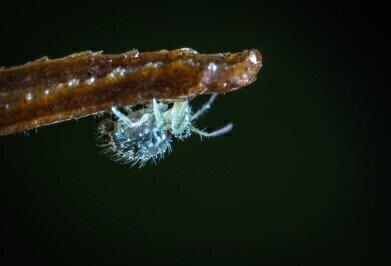Gas Chromatography
How to Keep Garden Pests Away with the Help of Chromatography
Sep 17 2021
Whether you’ve just started honing your herb growing skills or you’re a full-blown allotment aficionado, everyone can understand the frustration caused by pests. Even if you follow all the necessary steps for your coriander, cucumber or cauliflower, there are a long list of insects like aphids just waiting to come along and spoil it all.
So how do you get rid of them? Some recommend garlic. Others swear by vinegar. Or you can always try spraying them with soapy water. Anyone who’s tried these methods will likely be looking for a better way. Garlic is hit and miss as a deterrent. Vinegar seems slightly unethical given that it burns aphids on contact. And soapy water requires ongoing care and attention to spray, respray and check the aphids are gone for good.
Thanks to chromatography, that ‘better way’ could be on the horizon…
It all starts with ladybirds…
Search for any longer than 15 minutes for natural pest deterrents, and you’ll probably come across ladybirds. The tiny insects – known as ladybugs in the US or Coccinellidae in technical terms – are a godsend for farmers and gardeners because they prey on herbivorous insects. So much so that they were purposely introduced to North America in the mid-1900s to control the rise of aphids!
While aphids might not seem the most intelligent of creatures, they still have a natural instinct. By that, we mean they’re smart enough to avoid plants if they can sense danger. It’s the same as the reaction of a child to the sound of a barking dog, the feeling of a hot fire, or the sight of either.
For aphids, that sense comes through smell, and the danger in question is their predator, the humble ladybird…
Identifying the scary ladybird smell
Can the mere smell of ladybirds keep aphids away from plants? There’s only one way to find out. A team of researchers used gas chromatography–mass spectrometry to extract the volatile odour profile from live ladybugs and identify all of the individual components.
The use of this method to identify the exact flavour and fragrance profile of two essential oils is discussed in the article, ‘Unique Separation of Mint Essential Oils by Gas Chromatography Mass Spectrometry Using Two Different Capillary Phases: Bonded Polyethylene Glycol and a Novel Ionic Liquid Phase’.
The antennae of live aphids were then hooked up to an electroantennogram machine, which exposed them to each individual odour compound produced by the ladybirds. They found that aphids responded strongest to methoxypyrazines, including isopropyl methoxypyrazine, isobutyl methoxypyrazine and sec-butyl methoxypyrazine.
Those compounds can now be combined in a special odour blend, which will be spread through gardens and fields through an essential oil diffuser. If the field tests match the results from the lab, the same theory could be applied to other crops, pests and predators. Eventually, it’s hoped specialist diffusers will be developed for commercial use on farms and in gardens.
Digital Edition
Chromatography Today - Buyers' Guide 2022
October 2023
In This Edition Modern & Practical Applications - Accelerating ADC Development with Mass Spectrometry - Implementing High-Resolution Ion Mobility into Peptide Mapping Workflows Chromatogr...
View all digital editions
Events
Apr 23 2024 Kintex, South Korea
Apr 23 2024 Seoul, South Korea
Apr 28 2024 Montreal, Quebec, Canada
May 05 2024 Seville, Spain
May 15 2024 Birmingham, UK













